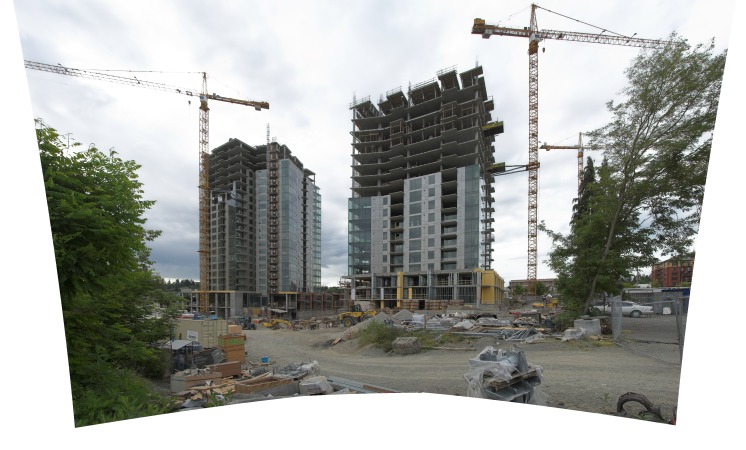Composites (Stitching) and Panoramas
EXIT
Digital cameras (and film, for that matter) are limited to a certain
quality or number of pixels. I have a very good camera, 10
megapixels, Nikon D-200. It is possible to exceed these pixels by
compositing two or more images together. It is a very complex
process made simple through automation. The main problem is
correcting perspective and distortion so that one image matches
perfectly to the next.
"Hugin" is a front-end program, or in other words, a program that
itself runs some other programs automagically that achieves the
panorama or composite.
The AutoPano program deliberately "warps" images so that they match
perfectly, resulting in a desired presentation -- rectilinear for
buildings, panorama for landscapes.
EnBlend is another helper that adjusts brightness along the edges and
softly blends edges so that you normally cannot locate the seam.
When you make the photos in the first place, you must ensure that
nothing changes from one photo to the next of the series. Turn
off auto-focus, auto-exposure and auto-color balance. Obviously,
with the automation turned off you'll need to pay attention to manual
focus, exposure and color balance.
In this following example, the buildings were too large and close for a
wide-angle photo to get them in one shot. So, I took three shots
and let the "Hugin" program combine them into a single photo.
Then you crop it rectangular and the result can be more megapixels than
your camera possesses.

